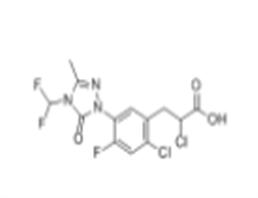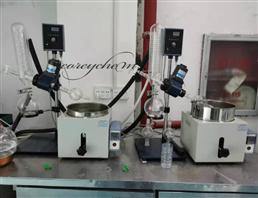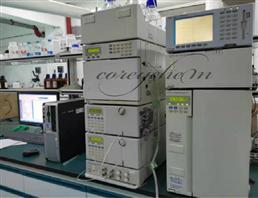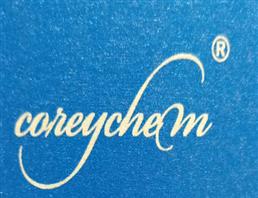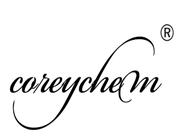Product Name: carfentrazone-ethyl
Synonyms: Affinty;ethyl (RS)-2-chloro-3-(2-chloro-5-(4-difluirimethyl-4,5-dihydro-3-methyl-5-oxo-1H-1,2,4-triazol-1-yl)-4-fluorophenyl)propionate;ethyl-2-dichloro-5-(4-(difluoromethyl)-4,5-dihydro-3-methyl-5-oxo-1H-1,2,4-triazol-1-yl)-4-fluorobenzenepropanate;carfentrazone (free acid);CARFENTRAZONE;ethyl-(RS)-2-chloro-3-[2-chloro-5-(4-difluoromethyl-4,5-dihydro-3-methyl-5-oxo-1H-1,2,4-triazol)-4-fluorophenyl] propionate;F 116426;F 8426
CAS: 128621-72-7
MF: C13H10Cl2F3N3O3
MW: 384.14
EINECS:
Product Categories:
Mol File: 128621-72-7.mol
carfentrazone-ethyl Structure
carfentrazone-ethyl Chemical Properties
Boiling point 472.8±55.0 °C(Predicted)
density 1.67±0.1 g/cm3(Predicted)
pka 2.76±0.14(Predicted)
EPA Substance Registry System Benzenepropanoic acid, .alpha.,2-dichloro-5-[4-(difluoromethyl)-4,5-dihydro-3-methyl-5-oxo-1H-1,2,4-triazol-1-yl]-4-fluoro- (128621-72-7)
Safety Information
MSDS Information
carfentrazone-ethyl Usage And Synthesis
Metabolic pathway 14C-Carfentrazone is more readily absorbed by the foliage of soybean than by weeds, with 56, 7, and 10% of the applied radioactivity recovered from the foliage of soybean, ivyleaf morning glory, and velvetleaf, respectively. Soybean metabolizes carfentrazone more rapidly than weeds, with 28% of the parent compound remaining in the treated tissue of soybean and 48 and 67% in ivyleaf morning glory and velvetleaf, respectively. All species accumulate similar amounts of the free acid derivative of carfentrazone which is the only identified metabolite. Since both carfentrazone and the free acid are potent inhibitors of protoporphyrinogen oxidase, the result indicates that the tolerance of soybean to carfentrazone may be attributed to its better ability to metabolize carfentrazone to unidentified metabolites, relative to weeds.

 China
China
